01 AUG 2019
S2S, Long-range Forecasting
Review of the 3rd Workshop on Subseasonal to Seasonal Prediction for Southeast Asia (S2S-SEA III)
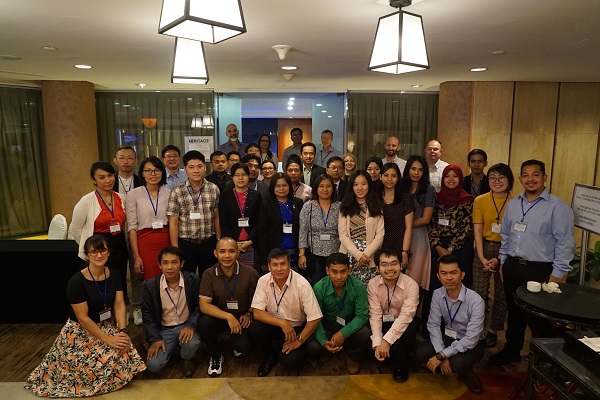
Participants from the ASEAN NMHSs and user agencies from the region together with their trainers. NMHSs participants’ interactions with potential end-users facilitated the co-development of prediction products.
Introduction
The ASEAN Specialised Meteorological Centre (ASMC) conducted the Third Training Workshop of the Capability-Building Programme in Subseasonal-to-Seasonal Predictions for Southeast Asia (S2S-SEA III) in Singapore on 22-26 July 2019. The previous two workshops were held in March 2017 and August 2018. The S2S predictions typically span timescales of 2 weeks to 2 months. The forecast range explored in this workshop series fall in the one to four weeks’ timeframe.
The first two workshops focused on the technical capability-building of the National Meteorological and Hydrological Services (NMHSs) in S2S predictions. For the third workshop, the focus shifted to exploring prediction product development. Therefore, ASMC engaged staffs from both ASEAN NMHSs and user agencies in the region. ASEAN NMHSs were represented by nine countries comprising Brunei Darussalam, Indonesia, Lao PDR, Malaysia, Myanmar, Philippines, Singapore, Thailand, and Viet Nam. The user agencies consist of regional stakeholders and national users from the disaster-risk management or environment sectors from Lao PDR, Malaysia, Myanmar, Singapore, Thailand, and Viet Nam.
The co-chairs of S2S Prediction Project Dr Frederic Vitart (ECMWF) and Dr Andrew W. Robertson (IRI Columbia University) were supportive of the S2S-SEA workshop series since its inception in 2017. They again participated in this workshop as trainers together with Dr Angel G. Munoz from IRI Columbia University. Representatives from the United Nations Economic and Social Commission for Asia and the Pacific (UN ESCAP) and Regional Integrated Multi-hazard Early Warning System for Africa and South Asia (RIMES) also participated. They shared their expertise in designing and conducting user discussion sessions. Together, MSS and ESCAP provided sponsorship for the workshop participants’ travel and accommodation.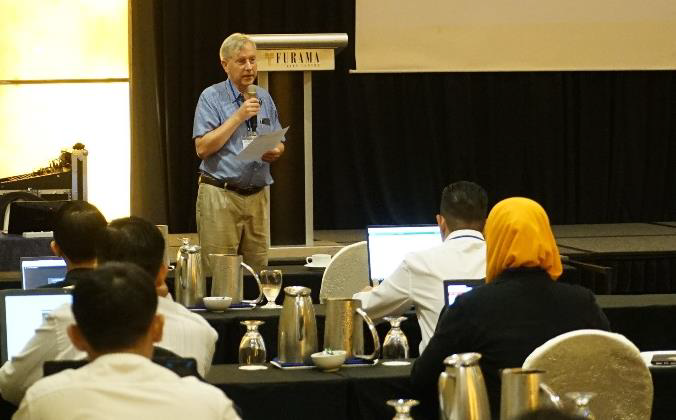
Director for the Centre for Climate Research Singapore (CCRS), Professor Erland Källén, gave the welcome address to kick-start the workshop.
Technical Training
Technical training was provided to the NMHSs on the first three days. Trainers shared on how and from where the S2S forecast and observation datasets could be accessed. Rainfall forecast values from mainly the ECMWF model were used in the workshop to assess flooding, drought, and haze in the case studies. Also used for the case studies were observation data from TRMM and CHIRPS to analyse the extreme events, and to evaluate the model’s predictions. Among other topics covered, Dr Vitart shared on the need for ensemble forecast in S2S prediction, by providing examples from the ECMWF forecast and hindcast systems. This topic provided the participants with background principles for probabilistic predictions, which is a valuable tool apart from deterministic forecasts. The importance of forecast verification and a good understanding of various forecast skill scores were heavily emphasised to ensure the forecast products were not used blindly. The NMHSs participants were also equipped with the knowledge to communicate forecast accuracy to end-users effectively.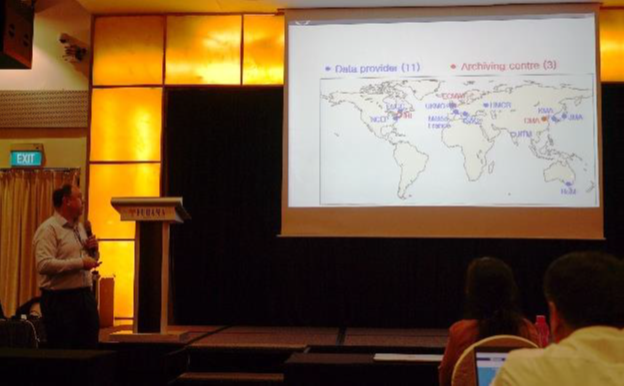
Dr Vitart describing the S2S Database and the model data providers.
Various prediction products were generated by the participants using the PyCPT. PyCPT, which was a tool briefly introduced at the second workshop, is an extension of the IRI’s Climate Prediction Tool (CPT) in the subseasonal timescale. CPT is well-known for simplifying the application of Model Output Statistics (MOS) in seasonal predictions through the use of advanced statistical downscaling techniques such as the Principal Components Regression (PCR) and the Canonical Correlation Analysis (CCA). These techniques were used to explore calibrating and improving model forecast using carefully considered predictors. 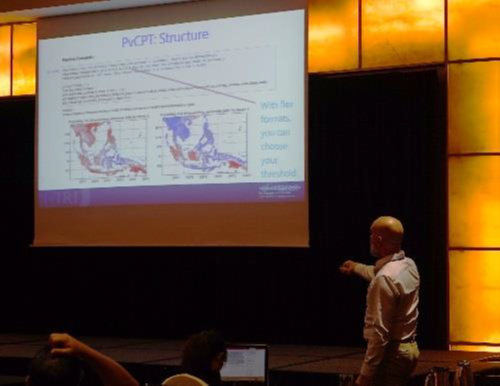
Dr Munoz explaining the PyCPT, a key downscaling tool used in the workshop, on its structure and the types of products generated out of PyCPT.
Case Studies
A total of five high-impact disaster case studies in the region were identified and assessed in consultation with ESCAP and RIMES. The case studies covered a drought, a haze, and three flood events, providing a spectrum of scenarios to evaluate the ability of the S2S model to predict extremes. Participants were tasked with the case studies that were relevant to their regions. The NMHS participants prepared background information on the case studies with analyses on observations and forecast products. These provided the backbone for the discussions with the user agencies (on Day 4 and 5), on the types of prediction products that would be useful for the respective case studies. Together, the NMHSs and the users co-developed the forecast products of interest to their case studies. They then presented their justifications for the products co-developed and shared how these could be further explored during the planned Pilot Project in the run-up to the fourth workshop.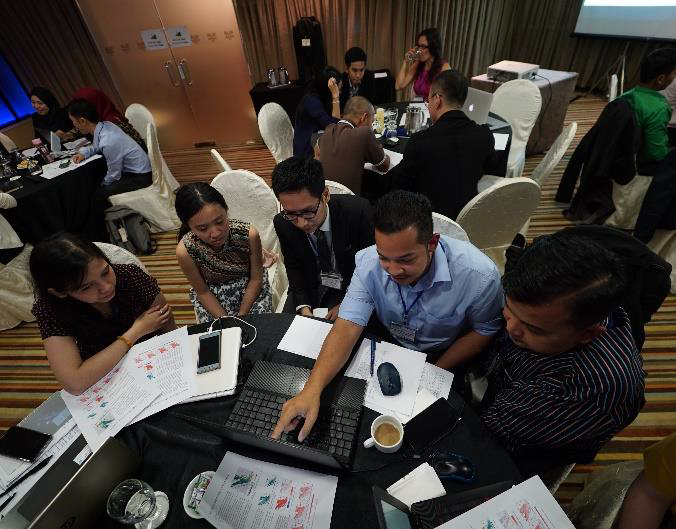
The NMHSs participants describing the case studies and their products to the user agencies. They were split into their groups according to their regions’ relevance to the case studies.
Pilot Project
On the last day of the workshop, the objectives and the scope of the S2S Pilot Project for the Southeast Asia region was discussed with the NMHSs and user agencies. In the project, real-time S2S model predictions would be provided to the NMHSs who would then package and interpret the model information for use by the respective users. Feedback from the NMHSs and users on the products experimented during the Pilot Project would be valuable to assess the usefulness of S2S forecasts in different applications. The sector that is of particular interest is disaster risk management, which is becoming an increasingly critical area in the face of more frequent and intense climate extremes.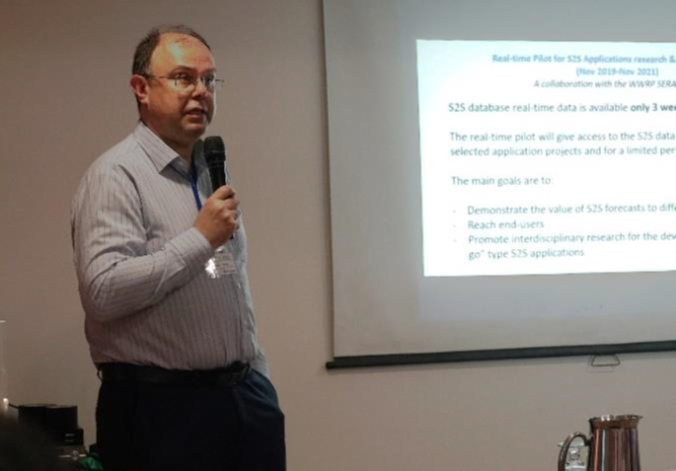
Dr Vitart explaining S2S real-time Pilot Project’s objectives that are focused on applications research and demonstration of products. The project will span 2 years from November 2019 to November 2021.
More details could be found in this meeting report: S2S_SEA_Workshop_2019_Report [PDF, 1.999 MB].